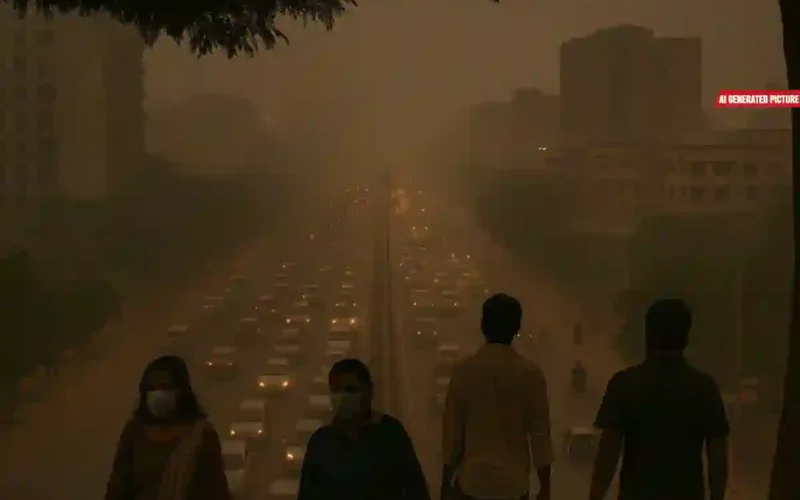Air pollution levels across various locations in Karachi show elevated PM2.5 concentrations, indicating poor air quality in the city.
At G3 Engineering Consultants in Karachi District, the PM2.5 level is recorded at 164 µg/m³. Similarly, Zafar Memon in DHA, Saddar Town reports a level of 160 µg/m³.
In Jamshed Town, the Climate Action Center, Urban Unit Karachi, Urban Resource Center, and Karachi Zoo have PM2.5 levels ranging from 161 to 167 µg/m³.
Gulshan-e-Iqbal Town also experiences high pollution, with readings of 160 to 165 µg/m³ reported at Agha Khan University IED, the University of Karachi’s Institute of Space Science and Technology, and NED Main Campus.
Visit Times of Karachi website for the latest news-related content daily
Additionally, Asif Gulistan-e-Johar in Gulshan District registers a PM2.5 level of 163 µg/m³. The highest recorded level among these locations is at the Orangi Pilot Project in SITE Town, with a PM2.5 concentration of 176 µg/m³.
These figures highlight significant air quality concerns that affect multiple areas within Karachi.
How many categories are there to measure Air Quality?
AQI 0–50: Good
The air quality is considered excellent, with minimal or no risk to public health. There are no necessary precautions for the general population.
AQI 51–100: Moderate
Air quality is generally acceptable; however, there may be a slight health concern for a small number of individuals who are unusually sensitive to air pollution. Active children, adults, and people with respiratory conditions like asthma should consider limiting prolonged outdoor activity.
Check Daily Weather Alerts on Times of Karachi dedicated pages
AQI 101–150: Unhealthy for Sensitive Groups
Sensitive individuals, such as those with asthma or other respiratory issues, may begin to experience health effects, although the general population is unlikely to be affected. It is advised that active children, adults, and those with respiratory conditions limit extended outdoor exertion.
AQI 151–200: Unhealthy
Health effects may begin to affect everyone, with sensitive groups potentially experiencing more serious symptoms. Active children and adults, and people with respiratory illnesses should avoid prolonged outdoor activity, while others—especially children—should reduce outdoor exertion.
AQI 201–300: Very Unhealthy
This range signals emergency-level health warnings. The entire population is more likely to experience adverse health effects. Those with respiratory conditions and active individuals should avoid all outdoor activity, while everyone else, particularly children, should limit time spent outdoors.
AQI 300+: Hazardous
Air quality is extremely poor, posing a serious risk to health for everyone. A health alert is in effect, and all outdoor exertion should be avoided by the entire population.











